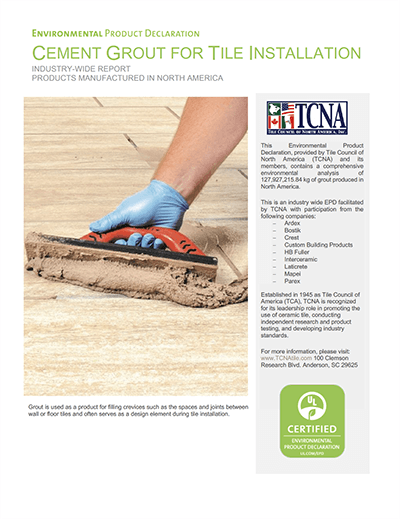The primary function of grout is to fill grout joints, that is, the spaces between tiles. Grouting materials for tile installation are available in different forms, with cement-based grouts being the most common.
This declaration is an environmental product declaration (EPD) in accordance with ISO 14025. The EPD relies on a Life Cycle Assessment (LCA) in order to provide information on several environmental impacts of a product over its life cycle. All of the products considered in the EPD meet or exceed these technical specifications:
- ANSI A118.6 – American National Standard Specifications for Standard Cement Grouts for Tile Installation
- ANSI A118.7 – American National Standard Specifications for High Performance Cement Grouts for Tile Installation
- ISO 13007 – Terms, Definitions and Specifications for Ceramic Tile Grouts and Adhesives
And some cement grout considered in this EPD have been certified to meet ANSI A138.1 – Green Squared® American National Standard Specifications for Sustainable Ceramic Tiles, Glass Tiles and Tile Installation Materials.
After a preliminary definition of cement grout, the declaration provides information about building physics, information about the basic material and its origin, a description of grout’s manufacture, an indication of how it’s processed, analysis of the conditions of its use, the results of an assessment of grout’s life cycle and its environmental effects, and results from tests and other verification.
The following EPD, provided by the Tile Council of North America (TCNA) and it’s members, contains a comprehensive environmental analysis of approximately 270 million kg of grout produced in North America.

